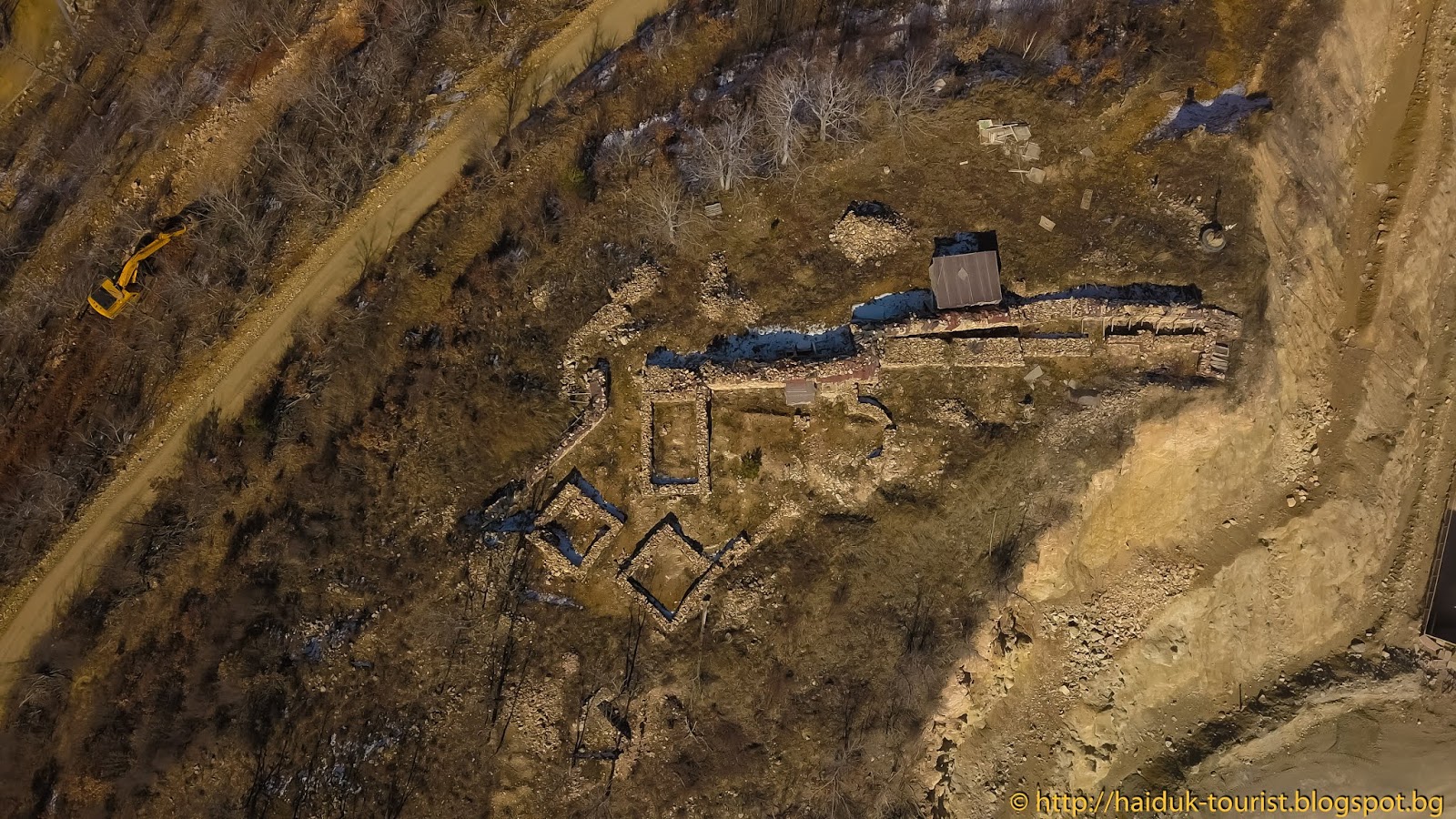Medieval fortress Asar Panagyurishte city
Overview
The late antique and medieval fortress Razlatitsa / Asar is the newest archeological find in the whole Pazardzhik region. It was discovered during accidental excavations at the end of 2009 near the Panagyurishte mine "Assarel" at the foot of Sashtinska Sredna Gora. It is 7.22 km northwest in a straight line from the center of Panagyurishte. However, access to it is difficult because the mine has a special access regime.
The excavations of the fortress are led by archaeologist Georgi Abdulov - director of the local history museum and are funded by a local mining company. They show that the fortress was built in the late IV and early V century - during the early Byzantine Empire, as part of the Srednogorski defensive limes (line). Military detachments that inhabited the fortress guarded the road passing from Vran Kamak to Serdika (Sofia), in defense of Thrace - the suburban area (hitterland) to the capital Constantinople. From the 5th to the 7th century the fortress was within the borders of Byzantium, and in the 8th, 9th and 10th centuries it was within the borders of the Bulgarian state. Probably when Bulgaria fell under Byzantine slavery, the fortress was conquered. There are no signs of a fire - indicating that it was either abandoned by its occupants or surrendered with a white flag - voluntarily. It was then liquidated.
On November 20, 2009 the final works on the archeological excavations were carried out and the primary conservation of the Assar fortress was carried out. Passing through the place where a round defensive tower was supposed to have been built, is the fortress wall. It is 1.5 m thick, with a preserved construction at a height of 2.3 m. A chapel was discovered near the fortress wall - a small secret gate of a fortification. It was used for military communications and is 1.1 m wide. After it, along the construction, is the main entrance door of the fortress. The walls of a building used by the defenders of the fortress are glued to the joint - these are living quarters or a tower. And on them was built a palisade - a defensive structure in the form of a wooden platform of thick beams, pointed at the top. To this day, part of the floor, which is clay, has survived, with preserved fragments of pithos - large clay vessels. It is assumed that the floor was larger.
The Bulgarian name of the fortress Asar, from which the name "Assarel" comes, comes from the Arabic-Turkish "hisar", "hisarlak" - fortress, fortification, stone mound. A hilly area with fields and forests, a small pond, a tributary of the Panova River, as well as the Asarel Hill - the eastern pine hills along the Assarel River in the western hills of the Lokvite area are also named with similar names in the Panagyurishte region.
Recommended
- Historical Museum - Panagyurishte
- Memorial complex
- Krasen-Buta fortress
- House-Museum-Raina Knyaginya
- Lekovata’s house
- Sun clock
- Tuteva's house and others


 Bulgarian
Bulgarian Romanian
Romanian
